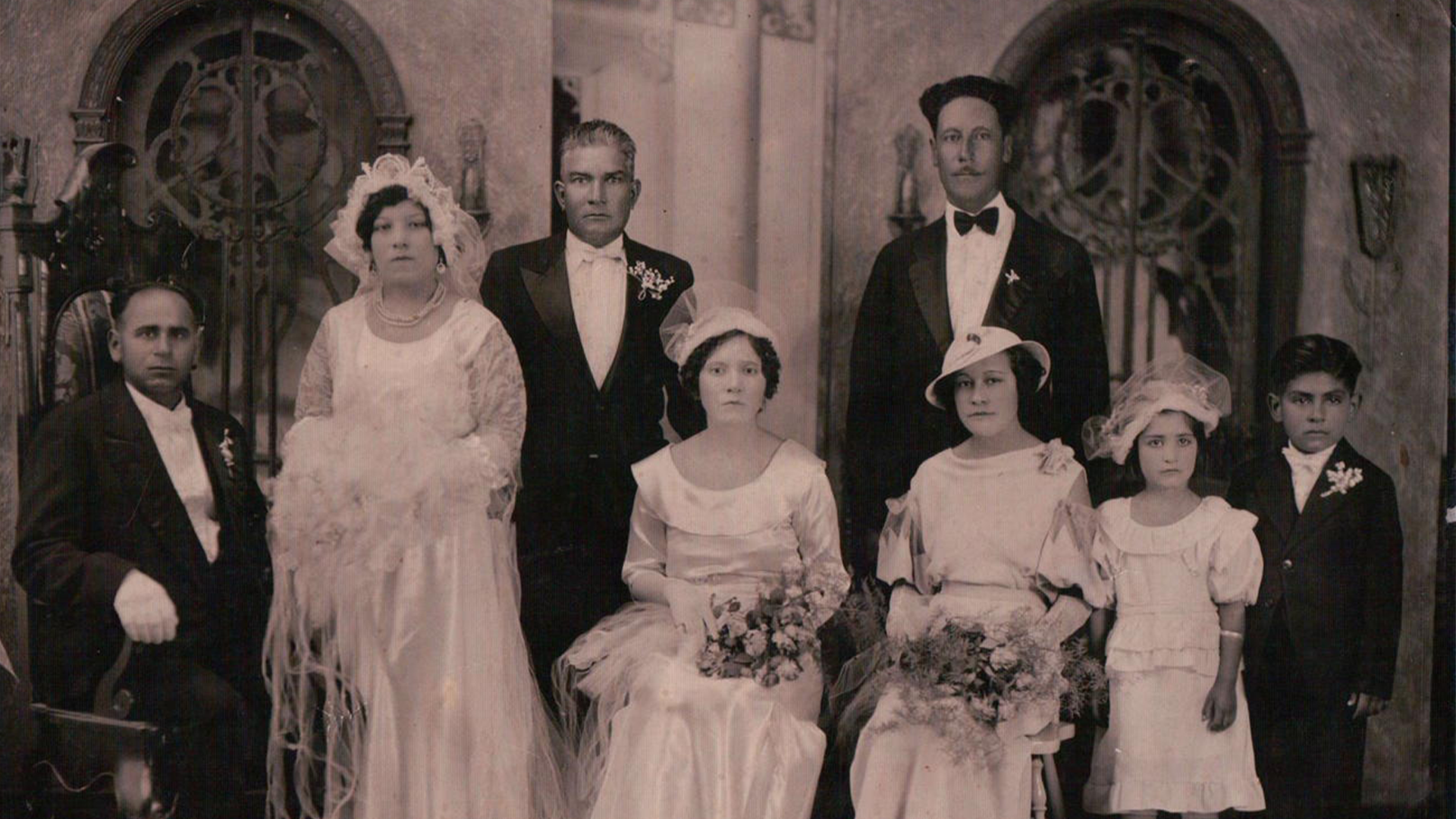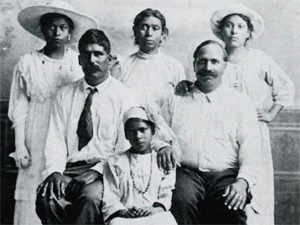I've always been fascinated with this history. Punjabi-Mexican marriages in early-1900s California. https://t.co/wYNEDvKVd4
— Gary Singh (@gary_singh) October 13, 2017

Source: Leonard’s book. About 378 marriages were reported in California between Punjabi-Mexican couples and mostly involved Sikh Punjabis, but they occurred in other states including Arizona, New Mexico, Utah, Texas, and even in Mexico and Canada during the first decade of the 1900s (Leonard, pp. 66-67). Many marriages also involved Muslim and Hindu Punjabis as well, although Anglos referred to all marriages generally as Hindu-Punjabi marriages, as Hindu was an umbrella term for Indians at the time (Leonard, pp. 57-58).
Why did Punjabis and Mexicans marry in the first place?
Perhaps more importantly than cultural synergies, the fact that both Punjabis and Mexicans could check ‘brown’ meant they would be able to circumvent anti-miscegenation laws, especially stringent in California at the time.

A woman spinning cotton in the Khyber Pakhtunkhwa Province of Punjab (1915). The only outside work that Sikh women of the Jat caste in Punjab were allowed to do was pick cotton—cotton was the crop that brought many Punjab-Mexican families together. Mexican families displaced by the Mexican Revolution found work in cotton fields from Texas to California, enabling many of the marriages to form.

Tens of thousands of Mexican women and children worked cotton fields in the United States, such as the Mexican woman above wearing an apron and standing next to a cotton field.
Source: https://www.ndtv.com/video/shows/ndtv-special-ndtv-24×7/us-sikh-community-how-hard-working-immigrants-made-a-foreign-land-home-242048

Mota and Consuelo Singh pose for their wedding photo. Consuelo was born in 1911 in San Andreas and was raised in Morenci, AZ where her father was a copper miner and she helped pick cotton alongside her sister. In 1934, her sister married a Punjabi man named Mola Singh, nicknamed Vicente, which is how she met Mota Singh, a labor worker turned farmer. She recalls what he said to her after she scratched her hands picking cotton: “No mas you go field. We gonna get married.” They married in Las Vegas on February 7th, 1935, and went to San Diego for the World Fair as their honeymoon.

Consuelo recently at the age of 80. Below are more photos of marriages between Punjabi men and Mexican women, courtesy of Karen Leonard’s archives online.

Jon Box Abdulla and Juanita Chavez Abdulla married in September 1926 in Watras, New Mexico and has their first child, Ali Abdulla, in Brawley, CA. Most families ended up having five to six kids on average (Leonard, pp. 178).

Valentina Alvarez and Rullia Singh take their wedding photo above. They were one of the thousands of Punjabi-Mexican couples that formed in the United States.


Source: https://www.washingtonpost.com/national/on-faith/punjabi-sikh-mexican-american-community-fading-into-history/2012/08/13/cc6b7b98-e26b-11e1-98e7-89d659f9c106_story.html
It is estimated that by 1946, there were 400 Punjabi families in California, 80% of which were between Mexican women and Punjabi men. In regards to cultural diffusion, Leonard and others detail how Mexican women insisted on raising the children in their own culture, raising them as Catholics and teaching them both Spanish and English. While Punjabis were largely accepting of their wives’ traditions, they also made attempts to control the family and children, leading to at least 20% of the marriages in divorce (Leonard, (pp. 145-153). In these cases, the women almost always received custody of the children. Most of their children also ended up marrying among Anglos or Hispanics. Later in the century, Mexican-Punjabi marriages resurged as Indian immigration restrictions eased.

Source: Karen Leonard

Wives and daughters of Punjabi immigrants during the first India Independence Day celebrated in the Yuba City-Marysville, California area. With few exceptions, all the wives were of Mexican descent. Punjabi and Mexican culture fused together, creating children that carried names such as “Maria Singh”, or “Jose Rai”. Both cultures shared a rural way of life and second-class citizen status. In some cases, sets of Latina sisters or other female relatives married ‘Punjabi business partners’, meshing into joint households.
.@alexismadrigal blew my mind with the lost history of Punjabi Sikh-Mexican food & family marriages in pre-1965 Central Valley! @lacocinasf
— Faith Adiele (@meetingfaith) April 8, 2017

Rasul’s El Ranchero restaurant in Yuba City was a Mexican restaurant that served customers for almost 40 years. The cuisine featured tamales and fajitas as much as it did chicken curry and roti. Its most popular dish was ‘Hindu Pizza,’ in which Mexican ingredients adorned a roti and where ‘Roti Quesadilla’ was a popular dish. Although El Ranchero closed down in 1993, Punjabi-Mexican cuisine represents one of the legacies of the cultural amalgamation between Sikh men and Mexican women.